Mystic Bhutan Hiking
Winding through forested valleys, glacial plains, and centuries-old villages, this 13-day Bhutan journey captures the essence of a land where culture, nature, and spirituality are deeply intertwined. From the buzzing energy of Thimphu to the stillness of Phobjikha’s crane-filled wetlands, every location invites quiet exploration and real connection. Ancient monasteries, fortress-like Dzongs, and light hikes form the foundation, while moments like crossing iron bridges or chatting with farmers over home-cooked meals create memories rooted in authenticity.
Midway, the journey deepens with a heritage farmhouse stay in the offbeat village of Tangsibji, offering intimate cultural exchange. A short domestic flight leads to Bumthang, where spiritual legends, yak cheese, and local craft beer enrich the experience. The final ascent to Tiger’s Nest Monastery is both reflective and unforgettable, followed by a traditional hot stone bath and farewell dinner.
Guided
casual hotels
Paro
Paro
easy to moderate
0 km / 0 mi
0
Min. 4, Max. 14
Paro International Airport (PBH)
Paro International Airport (PBH)
Highlights
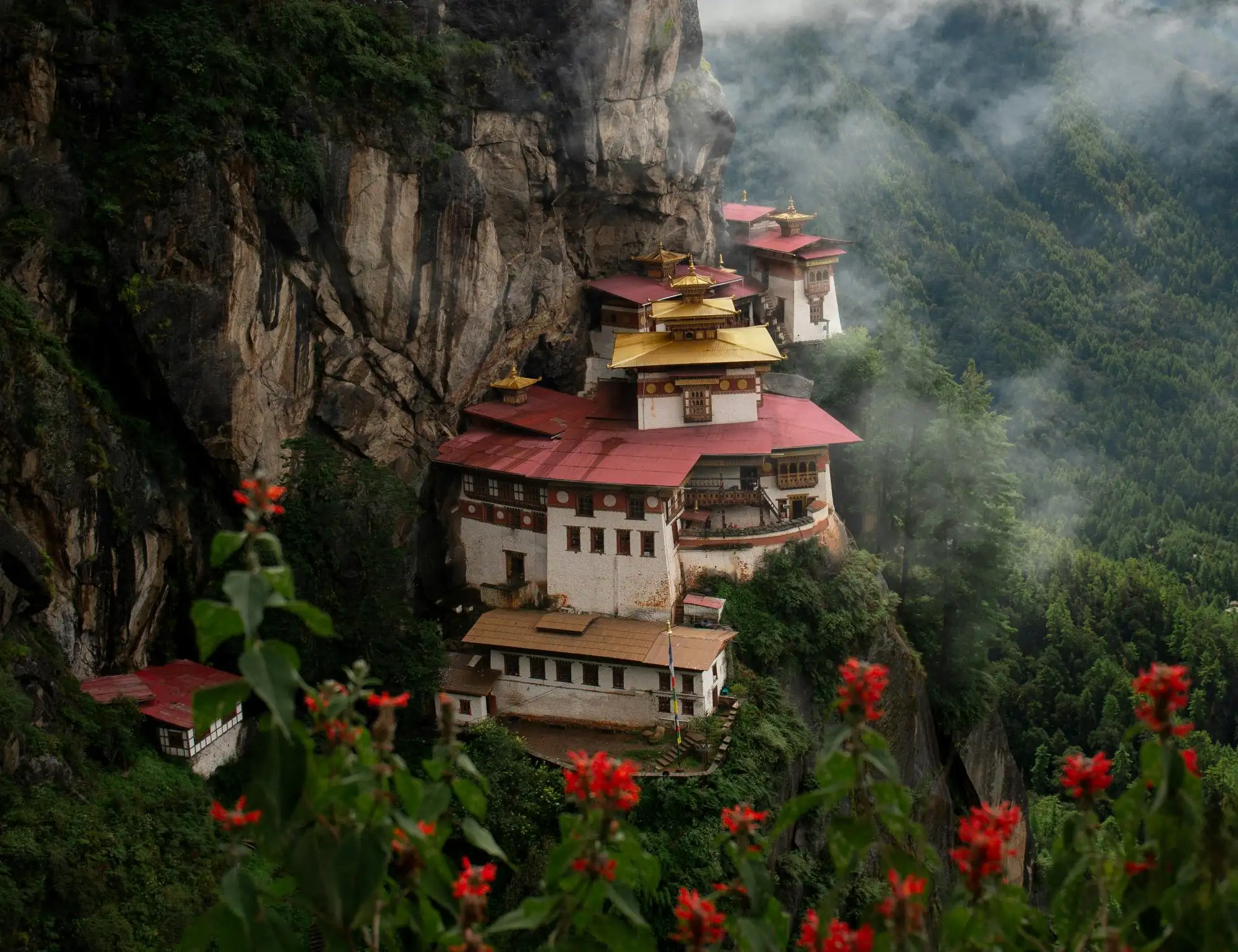
Where Legends Soar: The Tiger’s Nest Hike
Bhutan’s most iconic monastery clings to a cliff 900 meters high. This magical hike is both a spiritual journey and a visual spectacle.
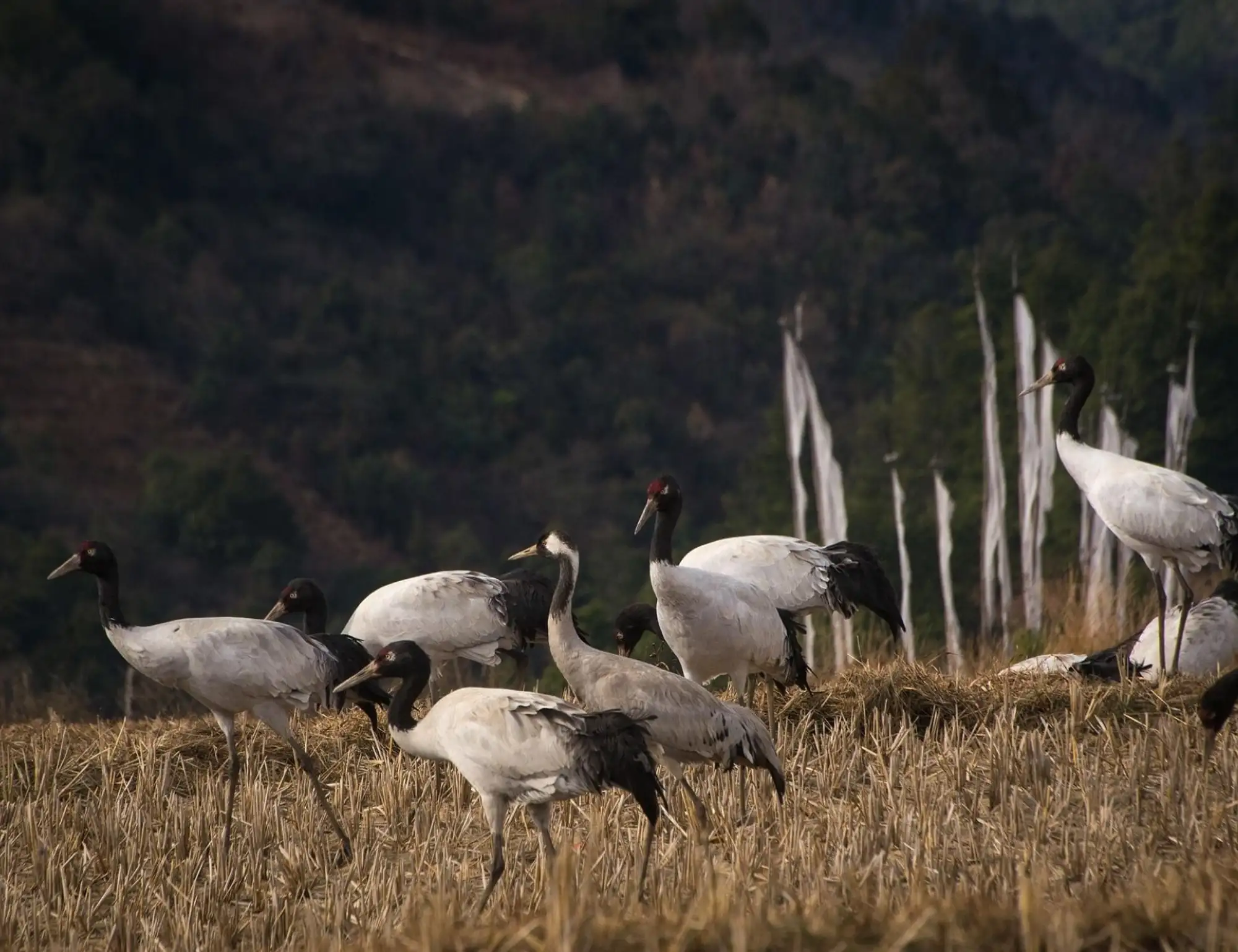
Valley of Silence
Phobjikha’s misty landscape and rare black-necked cranes create a world of calm. It’s where nature, peace, and folklore come alive.

Festive Spirit at Gangtey Top
Experience the vibrant cultural heartbeat of Bhutan during festivals at Gangtey Monastery, where traditional dances, music, and local gatherings create an unforgettable atmosphere.
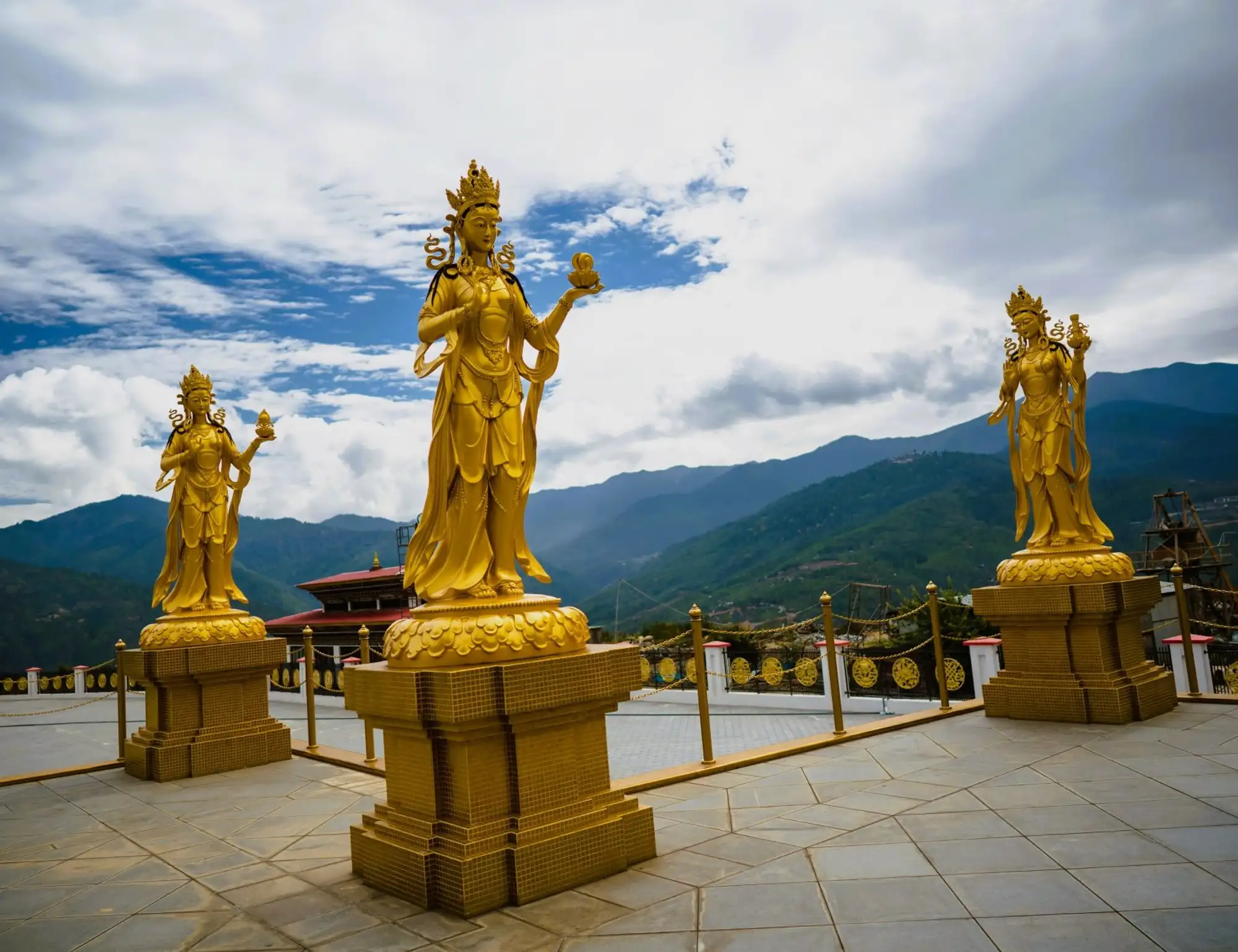
Golden Majesty at Buddha Dordenma
Marvel at the towering golden statue of Buddha Dordenma, a symbol of peace and prosperity, offering sweeping views of Thimphu Valley and the surrounding Himalayas.

Cheese Meets Cheers
Savor fresh yak cheese and sip local Red Panda beer straight from the source. Bhutan’s quiet valley surprises with bold, local flavor.
Itinerary
Brief Itinerary
Meals are indicated as B = Breakfast, L = Lunch, D = Dinner.
Listed hotels are subject to availability and may be replaced with similar alternatives of equal standard.
| Day | Place | casual Inns | Meals | Distance | Activity |
|---|---|---|---|---|---|
| DAY 1 | Thimpu | Hotel Thimphu Towers (4-Star) | D | ||
| DAY 2 | Thimpu | Hotel Thimphu Towers (4-Star) | B L D | 6 km / 4 mi | hiking |
| DAY 3 | Punakha | Hotel Lobesa (3-star) | B L D | 7 km / 4 mi | hiking |
| DAY 4 | Punakha | Hotel Lobesa (3-star) | B L D | 7 km / 4 mi | hiking |
| DAY 5 | Phobjikha | Dewachen Resort (3-star) | B L D | 6 km / 4 mi | hiking |
| DAY 6 | Phobjikha | Dewachen Resort (3-star) | B L D | hiking | |
| DAY 7 | Tangsibji | Tangsibji Heritage House (3-star) | B L D | 13 km / 8 mi | hiking |
| DAY 8 | Chumey Valley | Chumey Nature Resort (3-Star) | B L D | 3 km / 2 mi | hiking |
| DAY 9 | Chamkhar Valley | Gongkhar Hotel (3-star) | B L D | 12 km / 7 mi | hiking |
| DAY 10 | Chamkhar Valley | Gongkhar Hotel (3-star) | B L D | 3 km / 2 mi | hiking |
| DAY 11 | Paro | Tashi Namgay Resort (4‑Star) | B L D | hiking | |
| DAY 12 | Paro | Tashi Namgay Resort (4‑Star) | B L D | 6 km / 4 mi | hiking |
| DAY 13 | Paro | B |
Detailed Itinerary

Day 1: Thimpu
As you descend into Paro Valley, lush forested hills and the glistening Paro River unfold beneath you, with the majestic Paro Dzong perched above.
After a warm airport welcome by your guide, drive towards Thimphu, Bhutan’s capital. En route, stop at the historic Tamchog Lhakhang to walk across its iron bridge, built using 13th-century chain links. On reaching Thimphu, check into your hotel and take a short rest. If time allows, visit the serene Memorial Chorten, built in memory of the Third King.
End your day with a welcome dinner at a cozy local restaurant, where you'll get your first taste of authentic Bhutanese cuisine.
Drive Time: Approx. 1 hour
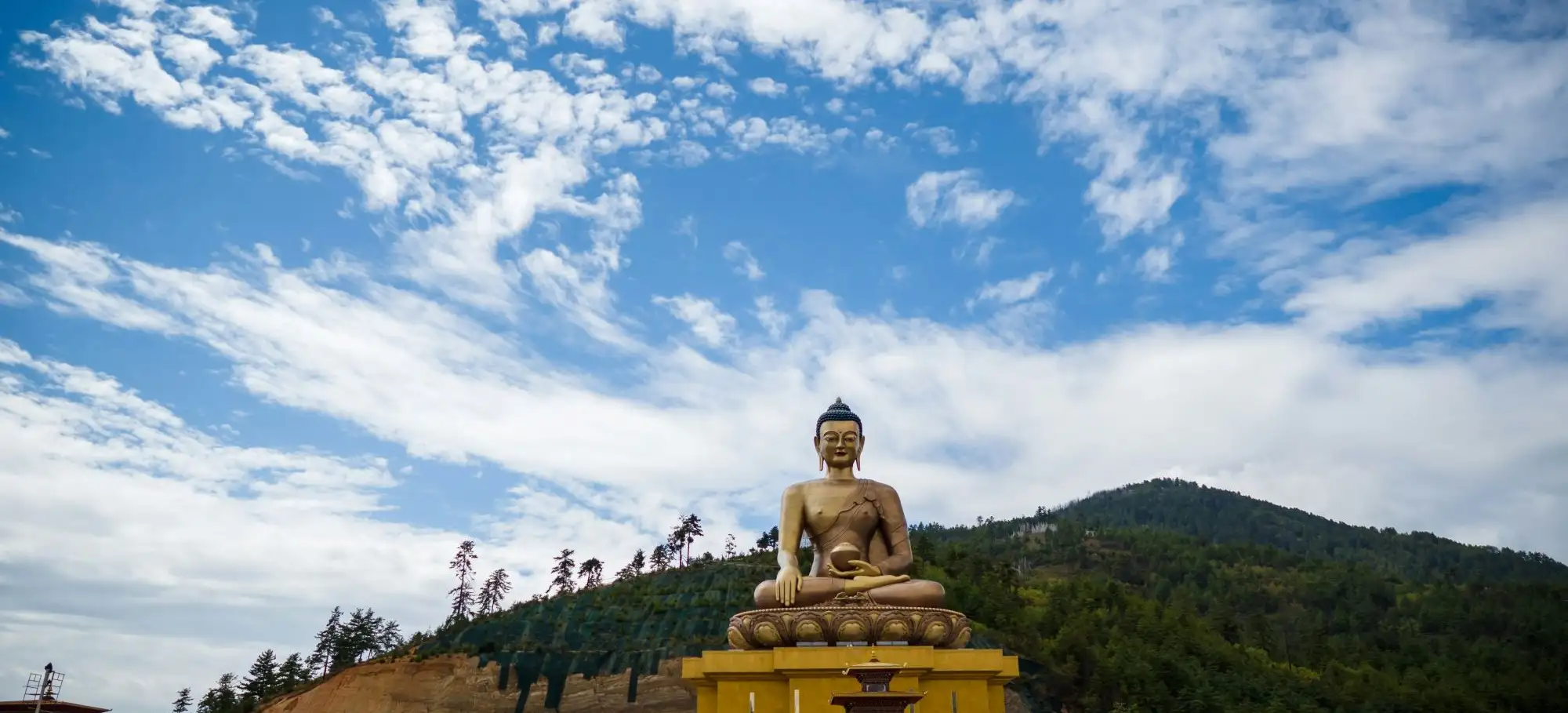
Day 2: Thimpu
Start the day with a drive to Kuensel Phodrang to witness the towering 169-foot Buddha Dordenma, offering stunning views over Thimphu Valley. From here, enjoy a peaceful 6 km hike to Changangkha Temple, a local favorite that gently introduces you to Bhutan’s natural trails. Continue to the Royal Takin Preserve in Motithang, where you’ll encounter Bhutan’s national animal in a forested habitat and learn about its cultural significance in Bhutanese mythology.
After lunch at a popular local café, visit the Folk Heritage Museum housed in a traditional 19th-century farmhouse, followed by the Royal Textile Academy where artisans demonstrate complex weaving techniques. Spend the evening strolling through the Crafts Bazaar, showcasing handmade Bhutanese goods. If it’s the weekend, explore the vibrant Centennial and Kaja Thorm markets where locals shop, snack, and enjoy live music in a lively street setting.
Elevation gain: 50–70 m
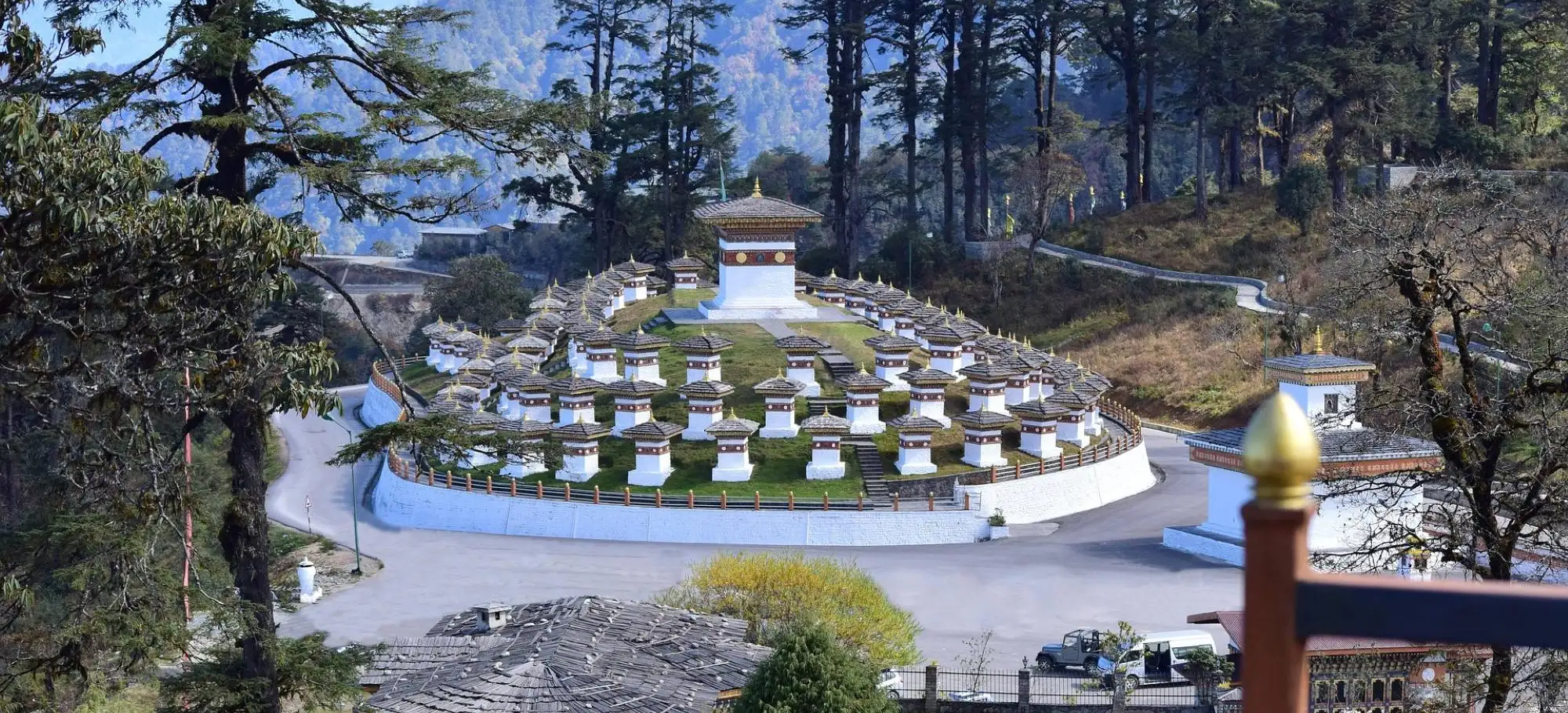
Day 3: Punakha
After breakfast, drive to Dochula Pass, located at 3140 meters and known for its 108 Druk Wangyal Chortens set against fluttering prayer flags. The pass offers panoramic views of the eastern Himalayas. You can choose between two scenic hikes.
The first, more challenging option is the Lungtsezelkha hike, which ascends through rhododendron forests to a temple at 3800 meters, offering sweeping views of both northern peaks and southern valleys.
The second is a segment of the Trans-Bhutan Trail, a historic which descends from Lamperi to Thinleygang through old forests and villages. For a longer but easier hike, you may continue this trail from Lamperi to Lapsakha in Punakha, covering 18 to 26 kilometers.
After hiking, descend into the Lobesa Valley, where you’ll visit Chhimi Lhakhang, also known as the Fertility Monastery, linked to the colorful legend of Bhutan’s Divine Madman. The visit includes a short walk through a charming village set amid lush rice fields. End the day at a cozy resort in Punakha, surrounded by natural beauty and tranquility.
Drive Time: Approx. 2.5 hours
Option 1: Lungtsezelkha Hike, Elevation gain: 660 m
Option 2: Trans-Bhutan Trail, Elevation gain: negligible (0–50 m)
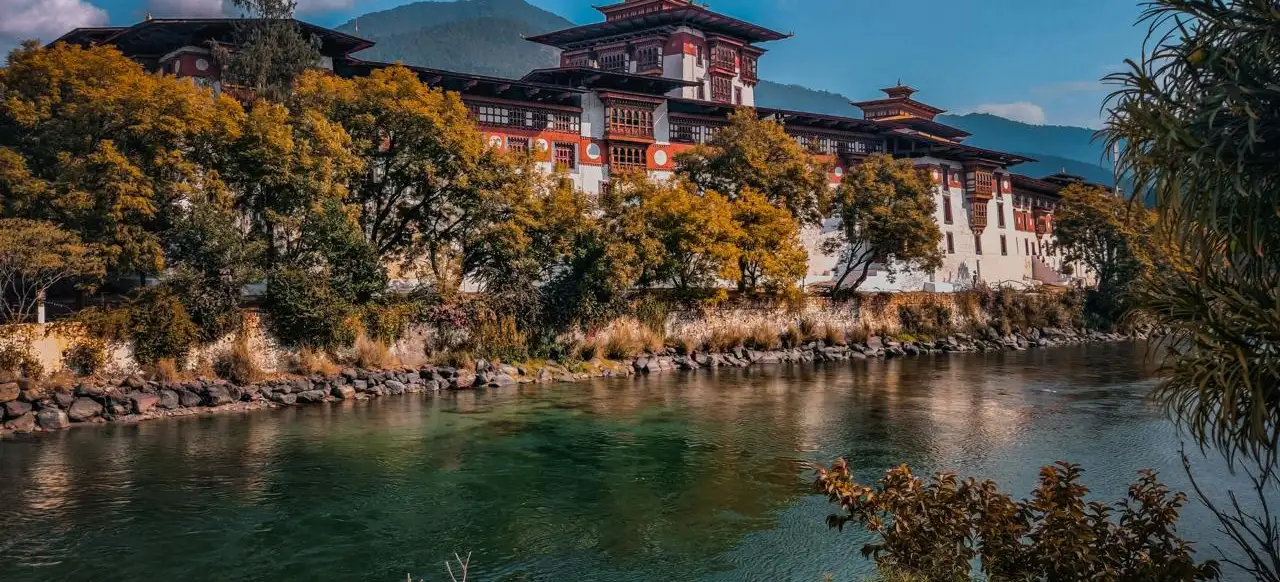
Day 4: Punakha
Start your day with a drive to Kabesa Valley and a scenic 45-minute hike through lush paddy fields to reach Khamsum Yuelley Namgyal Stupa, a temple known for its intricate design and panoramic views of Punakha Valley. You can optionally continue with a short riverside hike crossing a suspension bridge over the Mo Chhu River. A simple picnic lunch will be enjoyed along the riverbank.
Later, visit the iconic Punakha Dzong, beautifully located at the confluence of two rivers and known for its grand design and cultural importance. Conclude the day at the peaceful Sangchhen Dorji Lhuendrup Nunnery, where you’ll enjoy views of surrounding valleys and the chance to interact with friendly, English-speaking nuns.
Elevation gain: 250 m
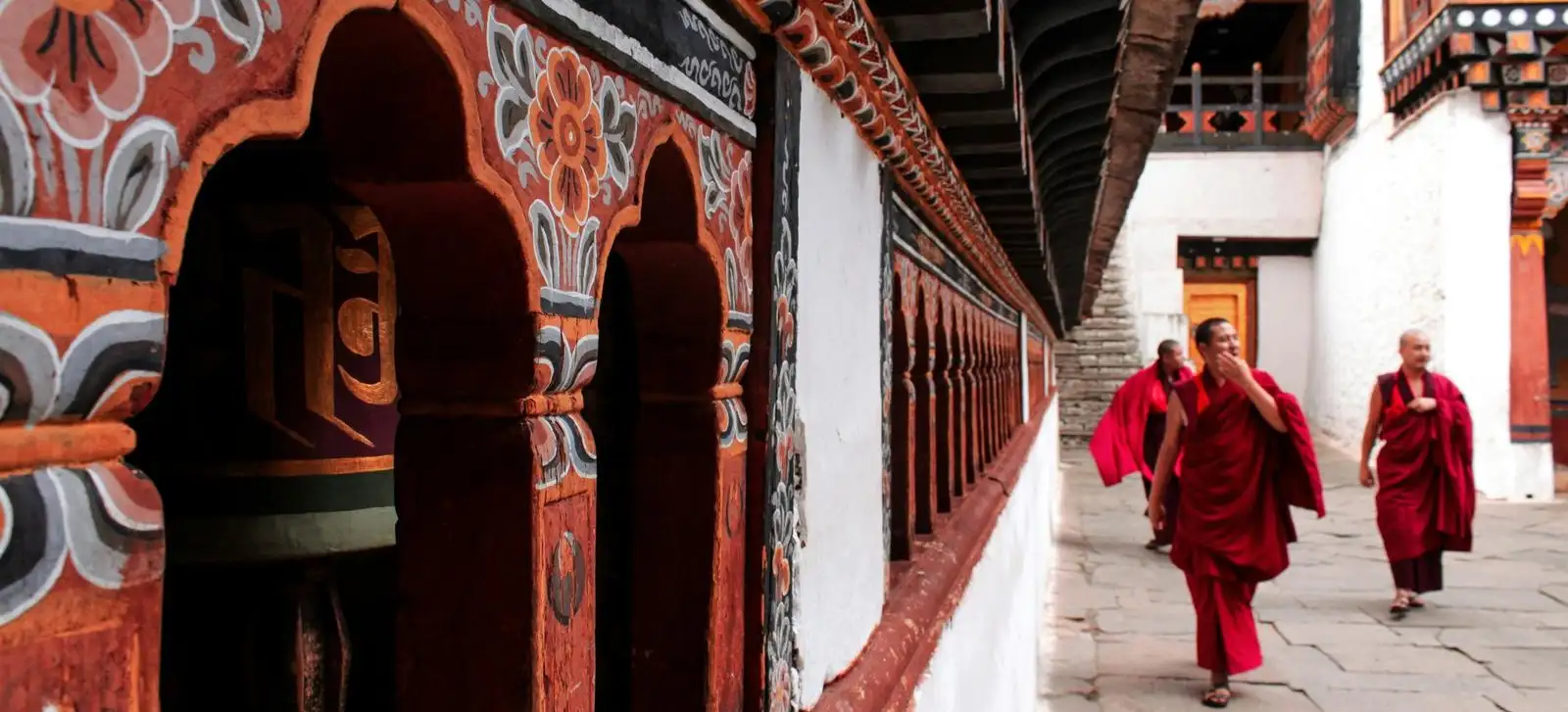
Day 5: Phobjikha
After breakfast, begin your scenic drive to Phobjikha Valley, following the beautiful Dang Chhu River as the road winds through bamboo and oak forests. Just before Pele La Pass, a side road leads into the peaceful Phobjikha Valley, often called the “Switzerland of the East” for its alpine beauty and open landscapes.
At the pass, enjoy an exclusive hike along the ridgeline with panoramic views of the valley below. Descend gradually for about 6 kilometers to reach the serene Gangtey Monastery. End the day at a warm, welcoming resort nestled in the valley with stunning views of the surroundings.
Drive Time: Approx. 2.5 hours
Elevation gain: negligible (0–50 m)
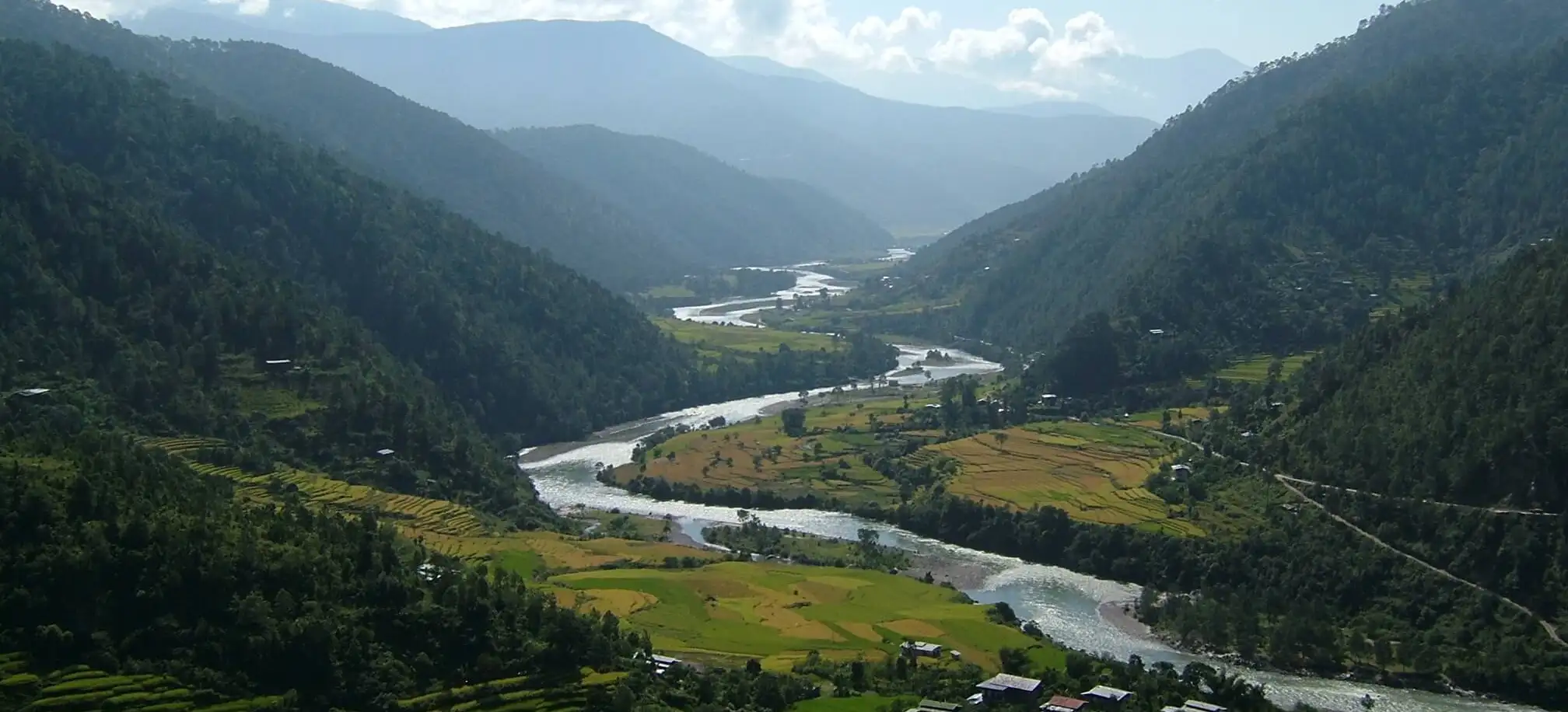
Day 6: Phobjikha
Begin your morning by visiting Gangtey Gompa, an important Nyingma monastery with sweeping views of the valley. Then take a relaxed hike through the Phobjikha Valley, a glacial landscape home to the endangered black-necked cranes that migrate here each winter from Tibet. Visit the Black-necked Crane Information Centre and use telescopes to observe these graceful birds in their natural habitat. Explore quaint local villages, meet farming families, and learn how agriculture and conservation coexist in this protected valley.
Elevation gain: minimal (50 m)
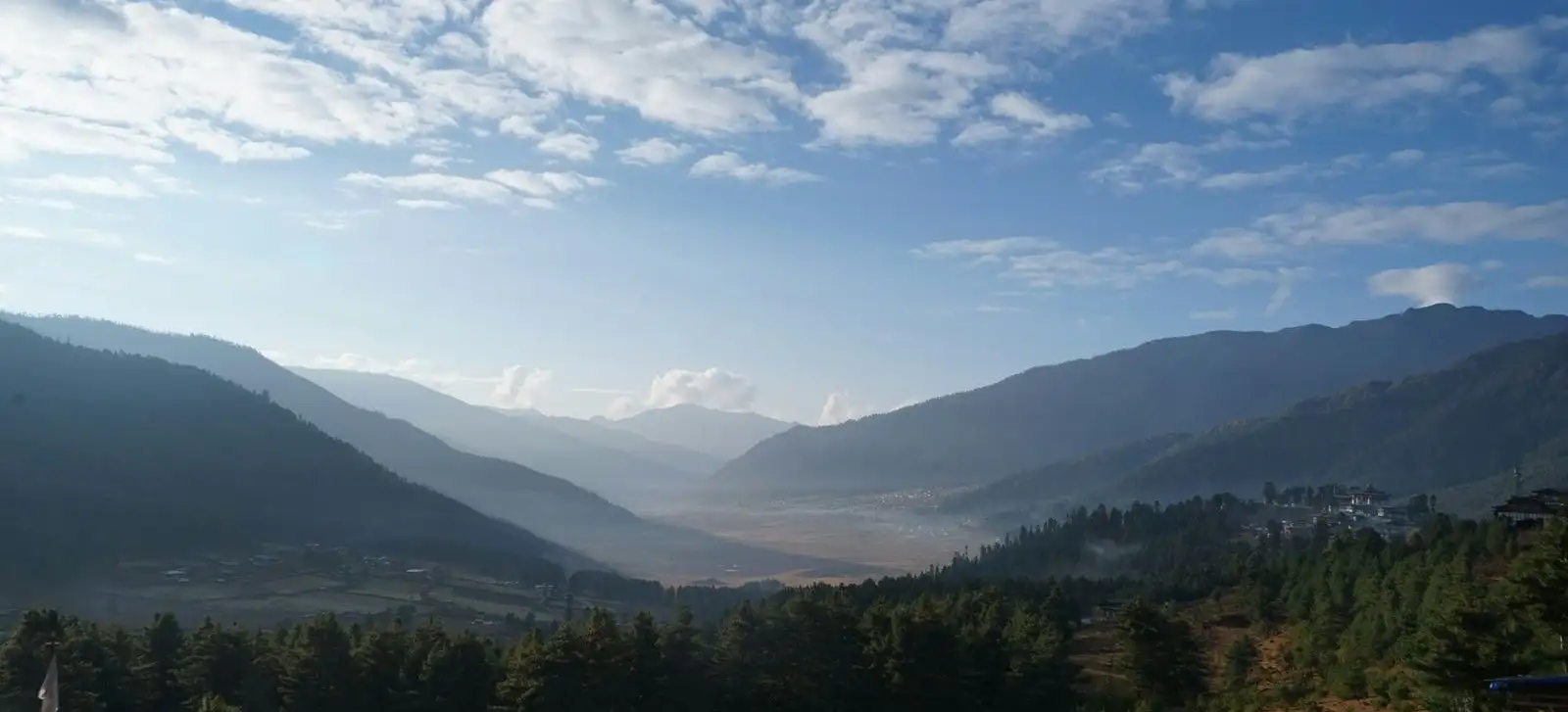
Day 7: Tangsibji
Begin early with a short drive to Khumbu village, the trailhead for today’s scenic hike. Gradually climb through high meadows and bamboo forests to reach a pass at 3600m, offering sweeping views of Phobjikha’s glacial valley. On the descent, walk through ancient forests of spruce, oak, and rhododendrons, pass yak herders, and reach Longtey village. The trail then merges with the Trans Bhutan Trail, continuing on to Rukubji. Enjoy lunch with a local family in a traditional farmhouse and visit Kuenzang Choling, the village temple.
After lunch, drive to Tangsibji, a beautiful offbeat village in the Trongsa district. Spend the night in a heritage farmhouse built in 1960. Experience authentic Bhutanese hospitality with fresh organic food and village legends. This unique, locally hosted stay is a consistent guest favorite for its warmth, stories, and untouched beauty.
Note; If you wish to skip today’s hike, you can head directly to the farmhouse in Tangsibji for a relaxed day exploring the village and soaking in its local charm without the trek.
The stay is basic however it is clean, authentic, and tourist-friendly.
Elevation gain: 300 m
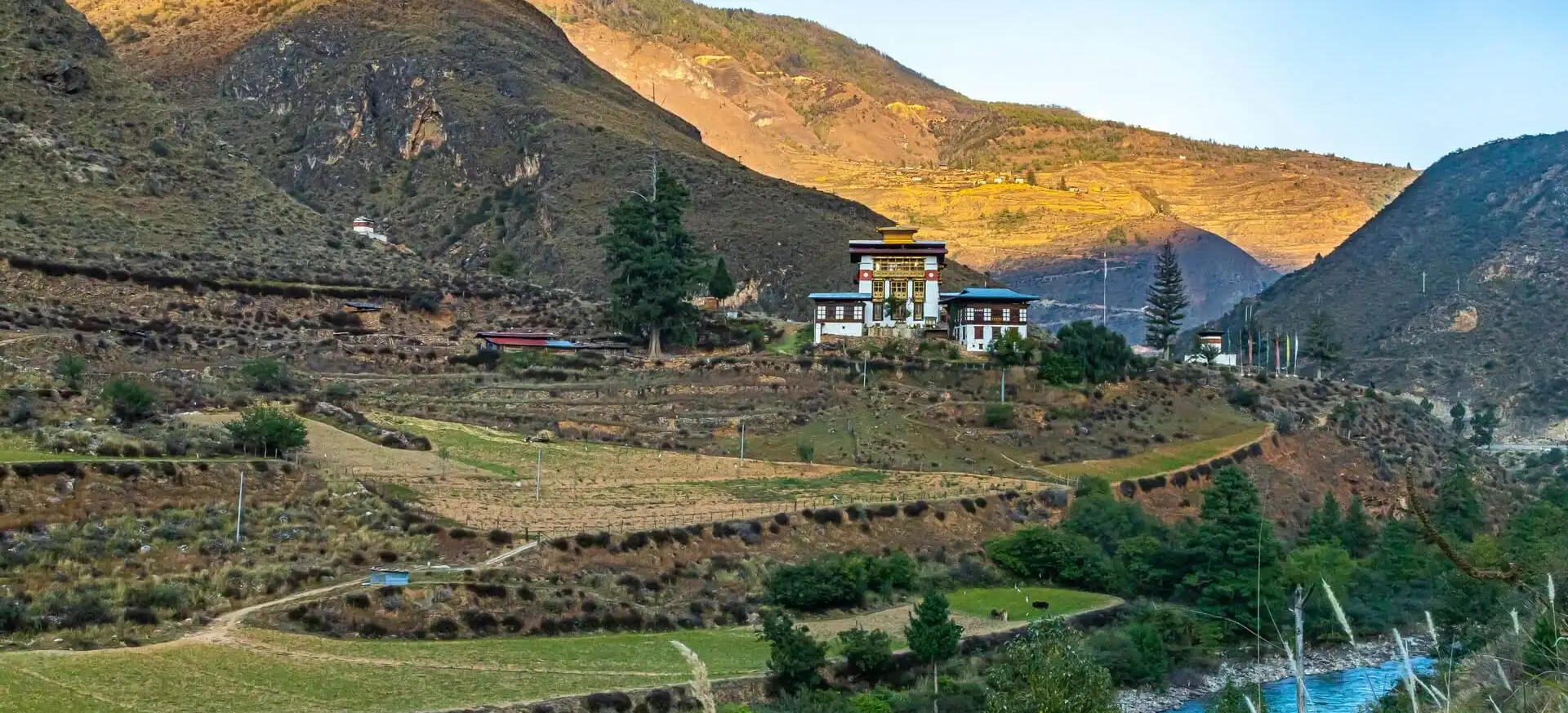
Day 8: Chumey Valley
Begin your day with a peaceful morning walk through Tangsibji village, observing rural Bhutanese life up close, from fieldwork to prayer flags fluttering across stone homes. After lunch with your host family, bid farewell and drive toward the cultural heartland of Bumthang, passing through Trongsa town.
On the way, visit the Tower of Trongsa Museum, a former watchtower now turned museum that showcases Bhutan’s monarchy. Highlights include the Raven Crown and the royal robes of the early kings. Then, explore the historic Trongsa Dzong, once the central seat of power in Bhutan’s early monarchy. End the day in Chumey Valley, where you will visit local weavers known for crafting traditional Yatha textiles made from yak wool.
Drive Time: Approx. 3 hours
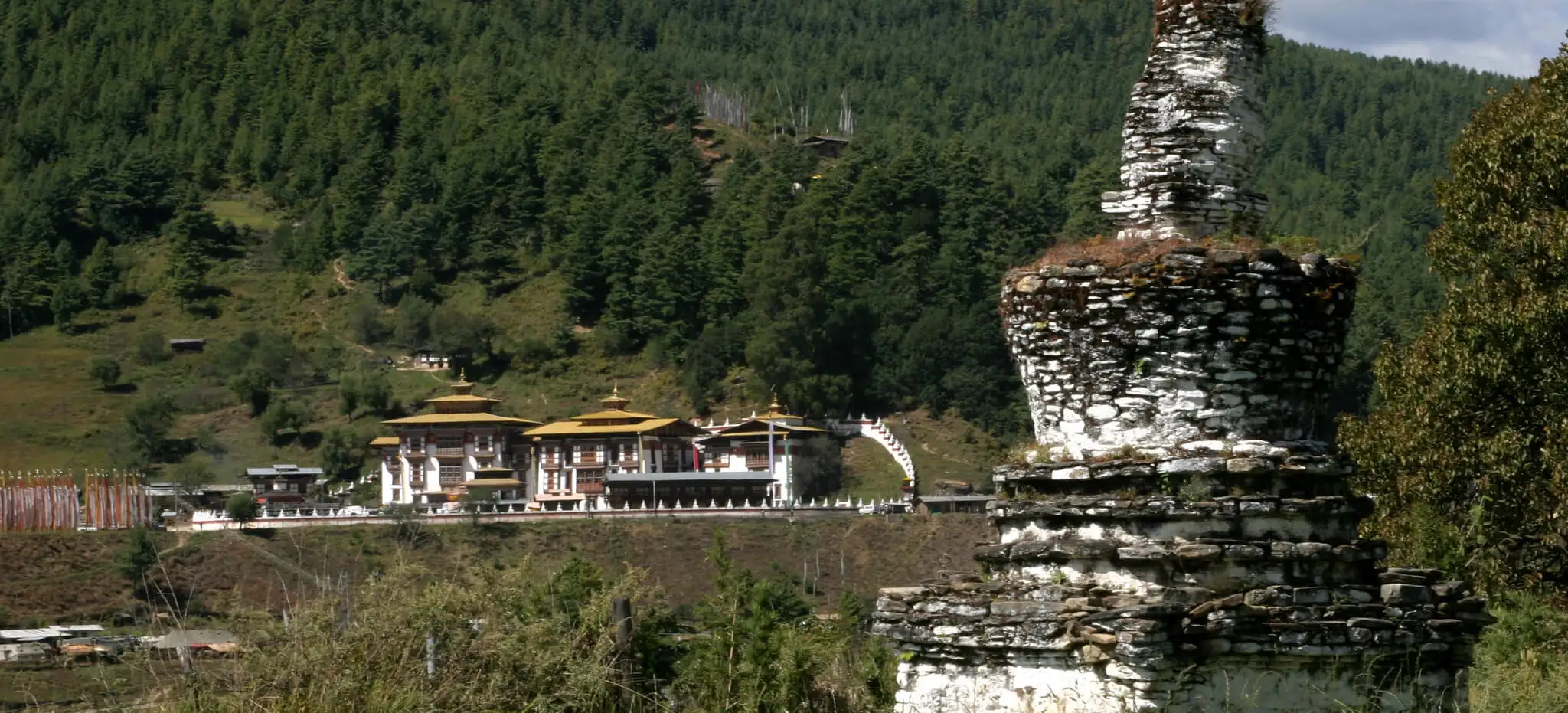
Day 9: Chamkhar Valley
After breakfast, drive 12 kilometers uphill to reach Tharpaling Monastery, founded by the revered Tibetan master Longchenpa in the 1300s. Begin a breathtaking 12-kilometer hike from an altitude of around 3800 meters, descending gently through lush temperate forests. Along the trail, you may spot colorful pheasants and other native birds as the path winds toward Kikila in the Chamkhar Valley. The trail is new, well-marked, and considered one of the most scenic day hikes in the Bumthang region.
Post-hike, visit the majestic Jakar Dzong, which stands proudly above the valley as one of Bhutan’s largest fortresses. Later, explore a local weaving center to interact with artisans crafting the region’s famous yak wool textiles. End the day strolling through the streets of Chamkhar town, soaking in the calm rhythm of valley life.
Elevation gain: negligible (0–50 m)

Day 10: Chamkhar Valley
Begin the day in Chamkhar Valley by visiting Jambay Lhakhang, one of Bhutan’s oldest temples built in the 7th century by Tibetan king Songtsen Gampo. Continue to the sacred Kurjey Monastery, a significant site in Bhutanese Buddhism where Guru Rinpoche is believed to have meditated. These temples offer deep insight into Bhutan’s spiritual and historical identity.
After a traditional lunch at a local farmhouse, take a short hike to Tamshing Lhakhang, founded by saint Pema Lingpa. Later, visit a small cheese factory to see how local Gouda is made and enjoy samples with a glass of Red Panda beer. End the day with a relaxed dinner at a cozy restaurant known for local cuisine and great conversation.
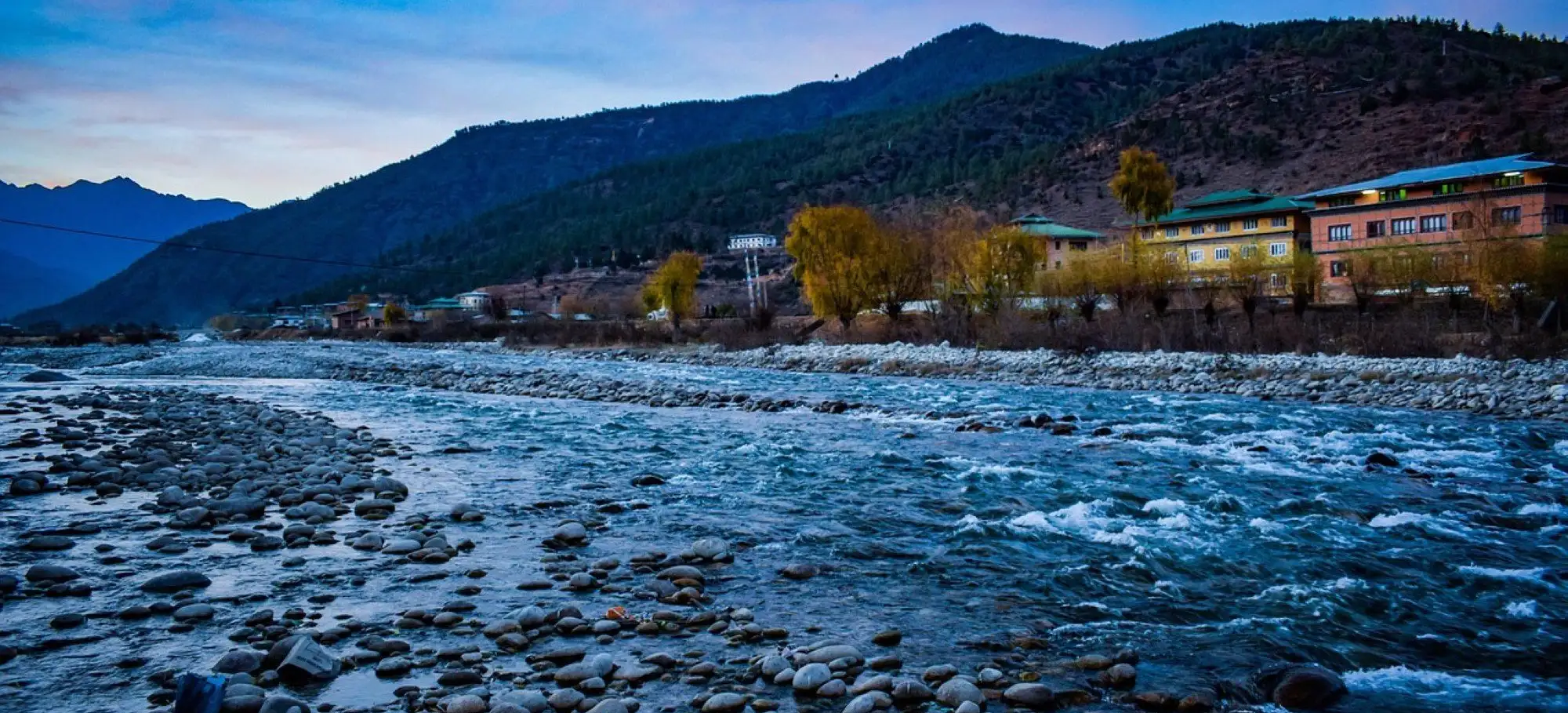
Day 11: Paro
Take a short 30-minute domestic flight to Paro, offering stunning aerial views of the northern Himalayas. Once in Paro, your exploration of the valley continues with a visit to the National Museum, home to treasured collections of Bhutanese art, textiles, stamps, relics, and spiritual artifacts. It’s a wonderful place to understand the country’s cultural evolution through centuries.
Next, visit the rare and beautiful Dungtse Lhakhang, a unique chorten-style temple built in 1421 by Tibetan lama Thongten Gyelpo, who is also remembered as the "Iron Bridge Builder." Its structure and murals are considered rare and significant in Bhutanese history.
Note: All sightseeing activities on this day are flexible. If you'd like to explore more or customize the experience, your tour guide will be happy to suggest extra visits based on your interest.

Day 12: Paro
Today you will hike to the legendary Tiger’s Nest Monastery (Taktshang), perched dramatically on a cliff at 3,120 meters. The trail passes through pine forests with prayer flags and offers stunning views along the way. The round-trip hike takes about 4 to 5 hours depending on your pace. On the return, visit the Drugyal Dzong ruins, a historic fortress that once defended Bhutan and offers distant views of Mt. Jomolhari.
Later, explore the peaceful Kyichu Lhakhang, one of Bhutan’s oldest temples. In the evening, unwind with a soothing hot stone bath at a local farmhouse, followed by a traditional Bhutanese dinner with a local family. End the day with a stroll through Paro town’s handicraft shops for last-minute souvenirs.
Elevation gain: 520 m
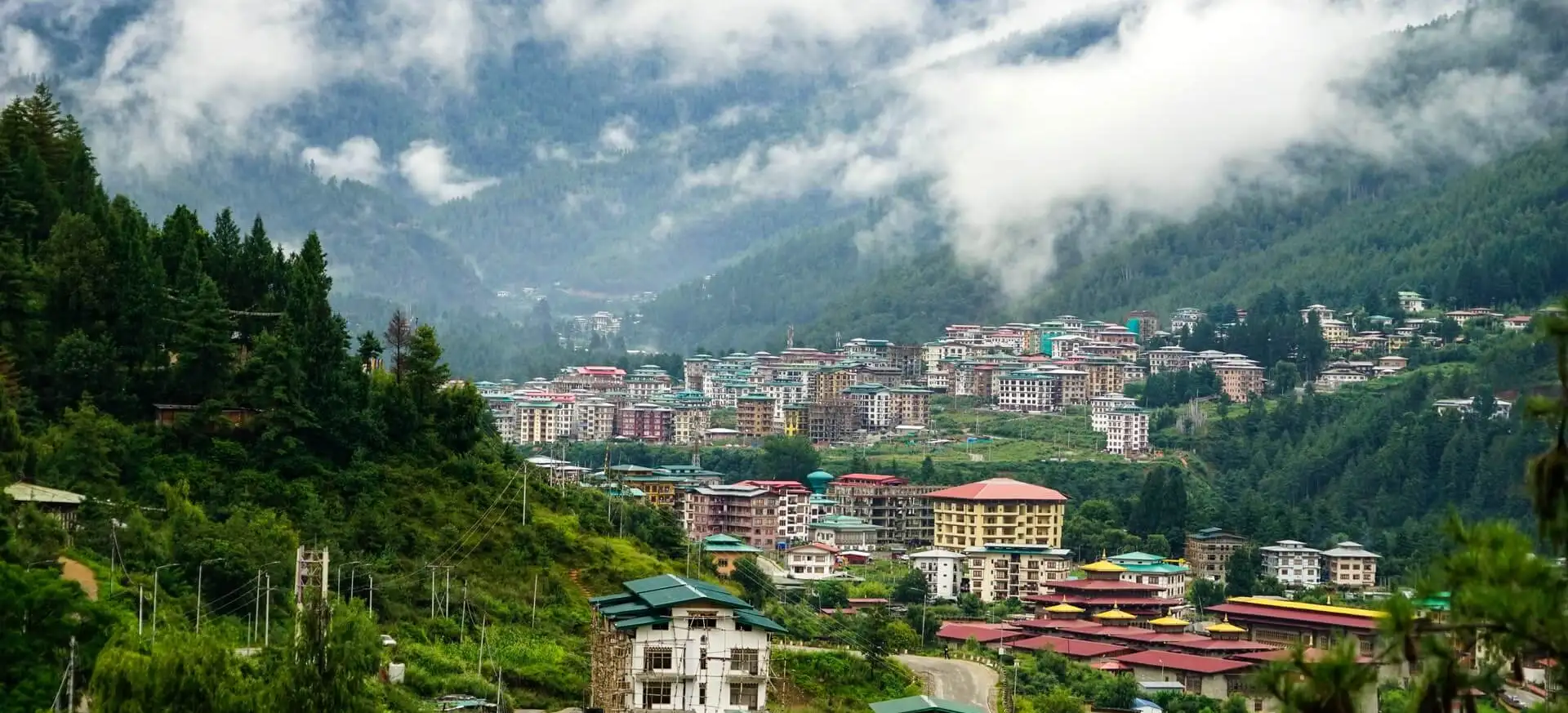
Day 13: Paro
After breakfast, your driver will drop you at Paro International Airport for your onward journey. Take with you memories of Bhutan’s warm hospitality, untouched landscapes, and timeless traditions.
Ready to plan your adventure? Download a print-ready detailed itinerary.
Map
Dates and Prices
Couldn't find a trip with convenient dates?
Open your date as a join-in tour or customize further as a private one.
Essential Info
Inclusions
LODGING
All hotels as mentioned in the tour details or similar (subject to availability).
trip leader
Expert Trip Leader(s) who look after your every need and add meaning to your vacation.
shuttle
A Van support follows the group of riders and carries all belongings.
Luggage Transfer
Transportation of luggage from one hotel to another.
Airport pickup and drop
Enjoy a hassle-free start and finish to your journey.
meals
Meals as per itinerary. Guests are given the opportunity to dine on their own so that they discover a location independently.
refreshments
Refreshments and mineral water while cycling.
entrance
Entrance fees to most of the monuments and temples.
Exclusions
Beverages
Beverages such as alcohol, tea, coffee, juice at a hotel or restaurant.
Gratuity
Gratuities for your guide team are not included in the trip price.
Arrival & Departure Details
Arrival & Departure – Paro International Airport
All guests will be received at Paro International Airport upon arrival and transferred to the hotel. On the final day, departure transfers will also be arranged from the hotel to Paro Airport to ensure a smooth and comfortable exit. Both pickup and drop-off services are included as part of your tour.
Weather
Bhutan's weather is deeply influenced by its mountainous terrain and altitude variations. Spring (March to May) is widely considered the best time to visit, with blooming rhododendrons, clear skies, and ideal conditions for hiking, sightseeing, and cultural festivals. Autumn (September to November) is another excellent period when the air is crisp, the skies are at their clearest, and major festivals like Thimphu and Paro Tsechu take place. Winter (December to February) brings cold temperatures, especially in higher altitudes, but offers stunning views of snow-capped peaks and fewer tourists, making it a peaceful time for cultural travel. Summer (June to August), on the other hand, is the monsoon season, with heavy rainfall, slippery trails, and reduced visibility, making it the least ideal time for trekking or exploring remote areas.
January
Mixed
February
Good
March
Best
April
Best
May
Best
June
Offseason
July
Offseason
August
Offseason
September
Best
October
Best
November
Best
December
Good
Best
Good
Mixed
Offseason
What to Pack
Packing smart is essential for a safe and enjoyable cycling adventure. From essential biking gear to clothing and travel necessities, this guide ensures you're prepared for any terrain or climate.
Recommended Bicycling Clothes & Gear
- Bicycling shoes or stiff-soled sneakers.
- Padded cycling shorts.
- Short-fingered cycling gloves (personal gloves are ideal).
- Brightly colored cycling jerseys or synthetic T-shirts for visibility.
- Synthetic cycling socks.
- Sunglasses with UV protection.
- Personal helmet (recommended even though provided).
- Personal saddle (optional for added comfort).
- Rain jacket or windbreaker.
- Cycling water bottle (to reduce plastic waste).
Note: Helmets, gloves, and water bottles are personal items, so bringing your own is recommended for maximum comfort and hygiene.
Clothing
- Light, breathable fabrics like cotton or linen.
- Full-sleeved clothing for sun protection.
- Warm layers for chilly mornings and evenings (if traveling in winter).
- Comfortable footwear for non-cycling time.
- Bring a compact rain jacket in case of sudden weather changes.
- Ethnic or modest clothing for exploring towns and temples.
Other Necessities
- Toiletries: Basic hygiene essentials, including insect/mosquito repellent and sunscreen.
- Hand sanitizer and wet wipes.
- Plug socket adaptor.
- Binoculars for wildlife spotting or desert landscapes.
Pro Tips
- Pack light but plan for the varying temperatures: warm days, chilly evenings, and desert winds.
- Use brightly colored clothing for visibility on roads.
- Pack light to leave room for shopping.
Luggage
Please limit your luggage to one medium-sized suitcase and one carry-on bag. Mark your luggage with your name, address, and phone number.
Visa Information
Before venturing on your adventure, make sure you're equipped with essential travel advice, including security updates, local laws, and crucial passport and visa information. Start by visiting the official government website of your home country for accurate and reliable guidance:
- UK Residents: Stay informed by reviewing the Foreign, Commonwealth & Development Office (FCDO) Travel Advice.
- US Residents: Access vital travel tips and updates through the US Department of State Travel Advice.
- Australian Residents: Plan ahead with the latest updates on the Smart Traveller website.
- Canadian Residents: Find comprehensive travel and visa guidance on the Government of Canada's Travel Advice and Advisories.
- New Zealand Residents: Get practical travel advice on the New Zealand SafeTravel website
- Residents of Other Countries: Check with your government or local consulate for tailored travel advice and requirements.
Note: Passport and visa regulations can change at any time. Stay proactive by checking for the latest updates to ensure a smooth and stress-free journey.
Insurance
Medical insurance that covers medical costs in case of an accident during the trip is mandatory to participate in our tours.
We recommend to purchase adequate travel insurance in order to participate in our tours and protect yourself from unforeseen events. Our experience shows that guests who purchase travel insurance—including coverage for all activities on the itinerary, trip cancellation, interruption, delay, baggage damage, loss or theft, personal accident, death and repatriation costs, medical and emergency expenses (including Covid-19), and personal liability—travel with greater peace of mind.
Can I use my credit card insurance?
Yes, as long as it meets our requirements and provides adequate coverage. Ensure you have an emergency contact number and policy number available.
When should I buy travel insurance?
Purchase travel insurance as soon as you've paid in full or booked your flights.
Is proof of travel insurance required?
Yes. You must provide your insurer's name, policy number, and emergency contact via our reservation form. This is mandatory. If you cannot provide proof, you’ll need to purchase insurance before traveling with us.
Does Art of Bicycle Trips sell travel insurance?
We do not sell travel insurance directly, as we believe our customers should have the freedom to choose a policy that best suits their needs. However, we recommend Insured Nomads as a great starting point.
